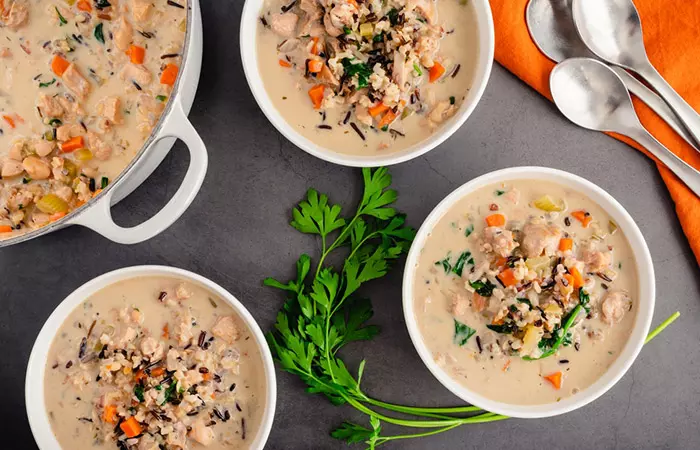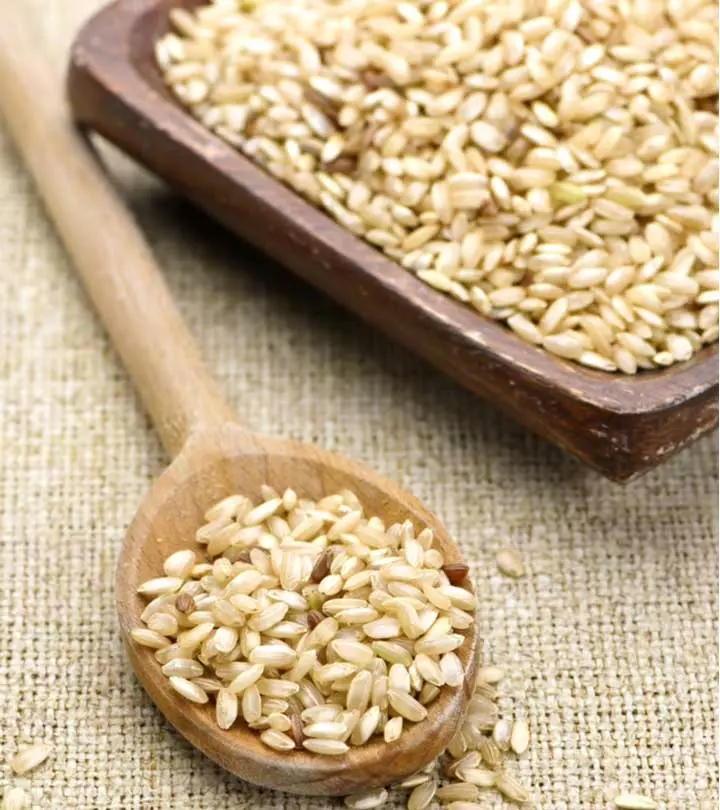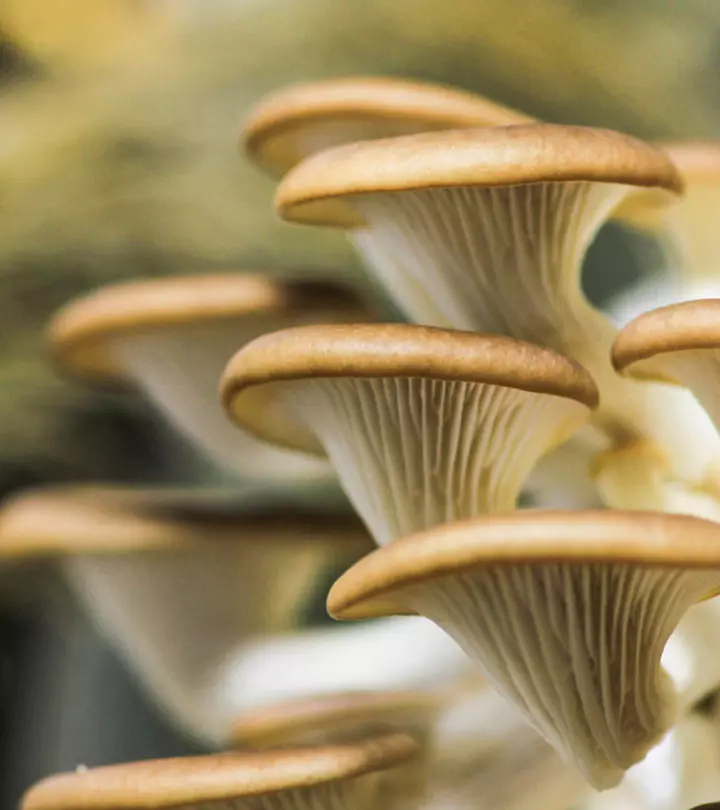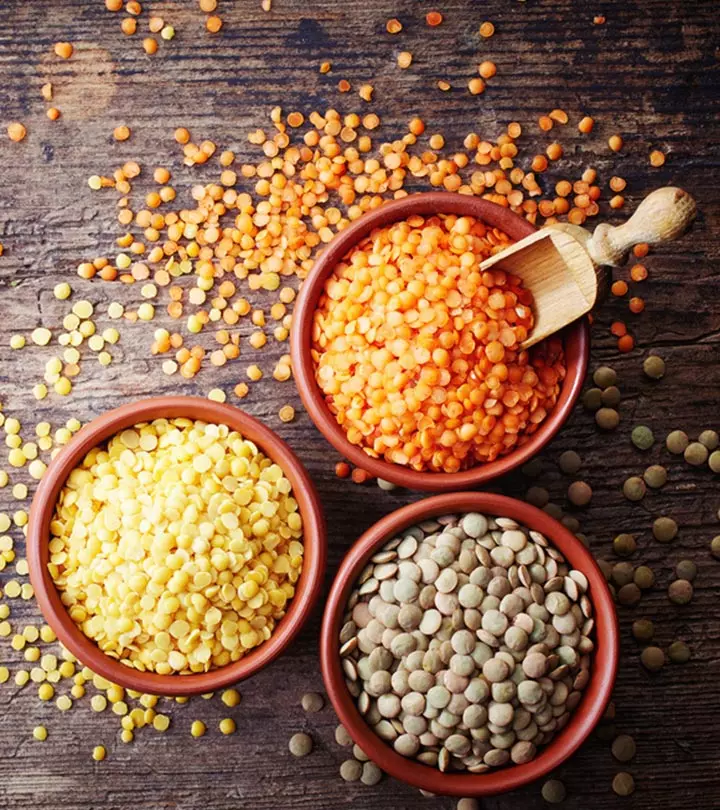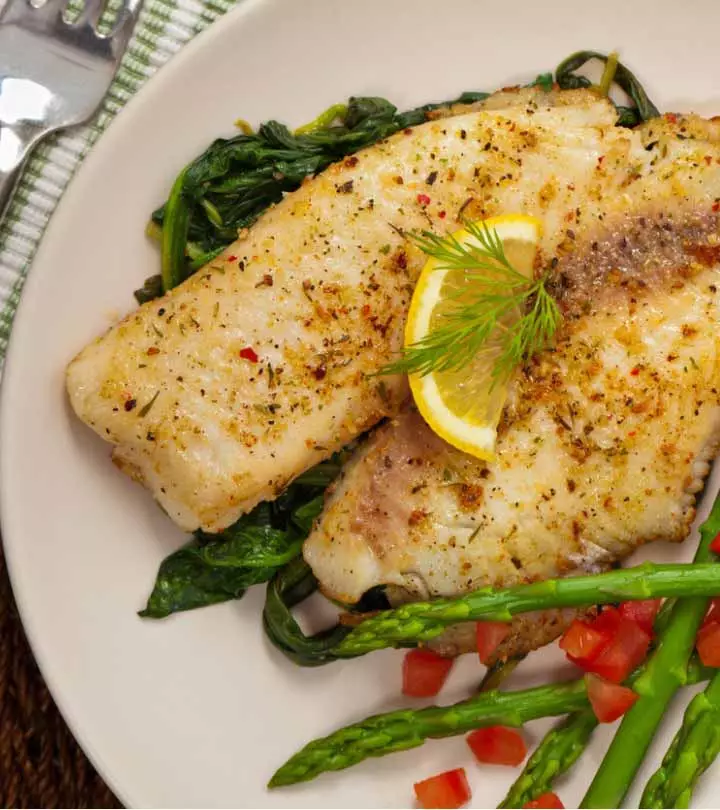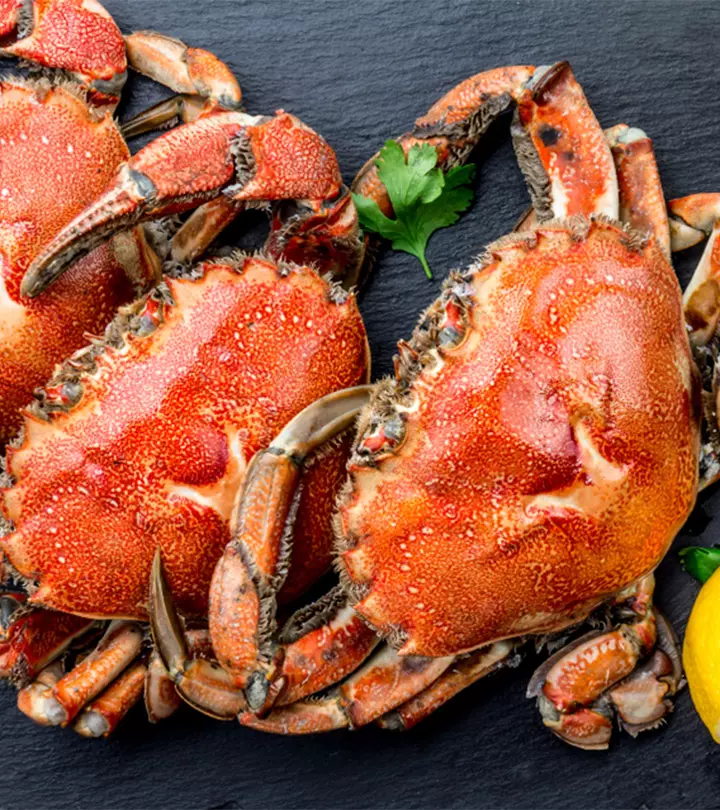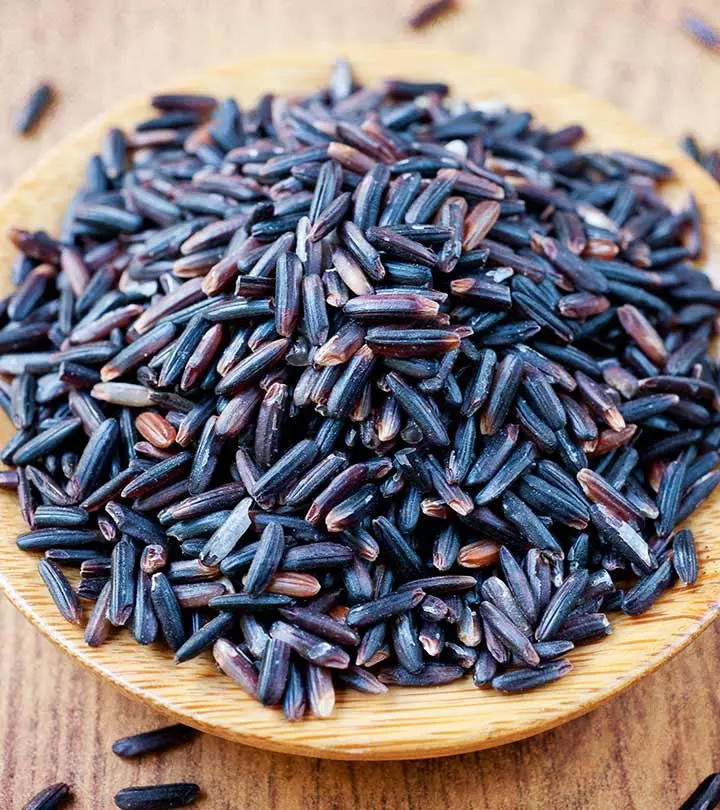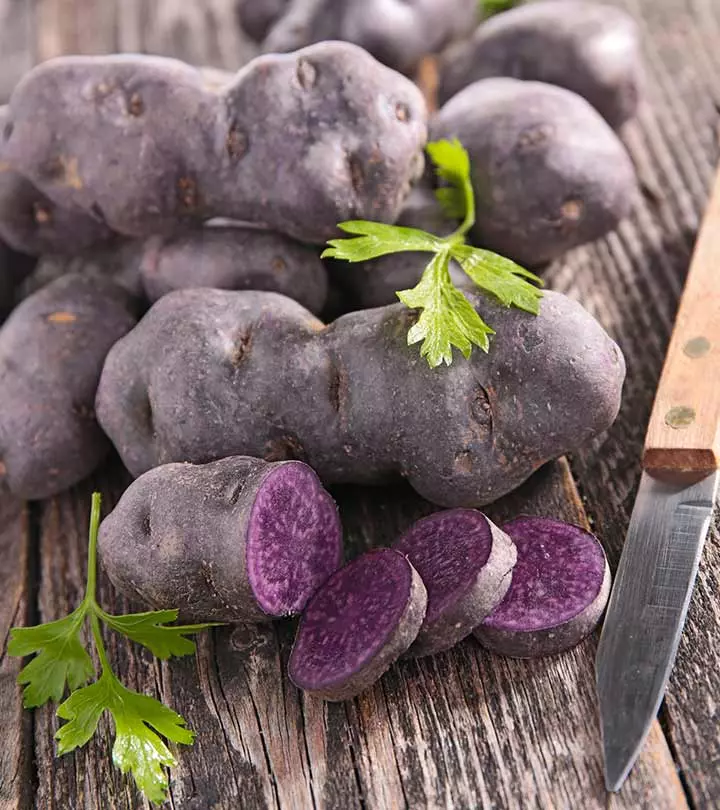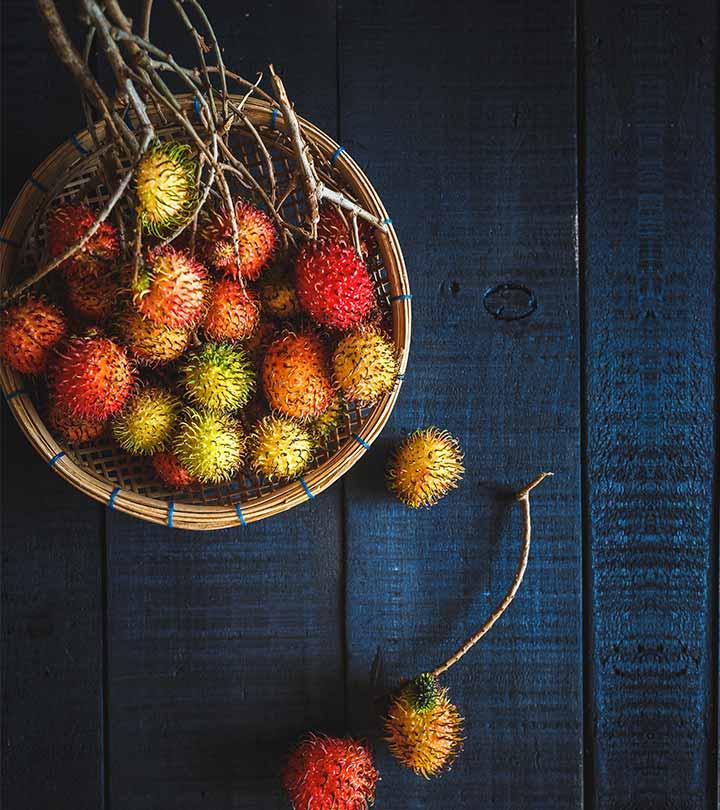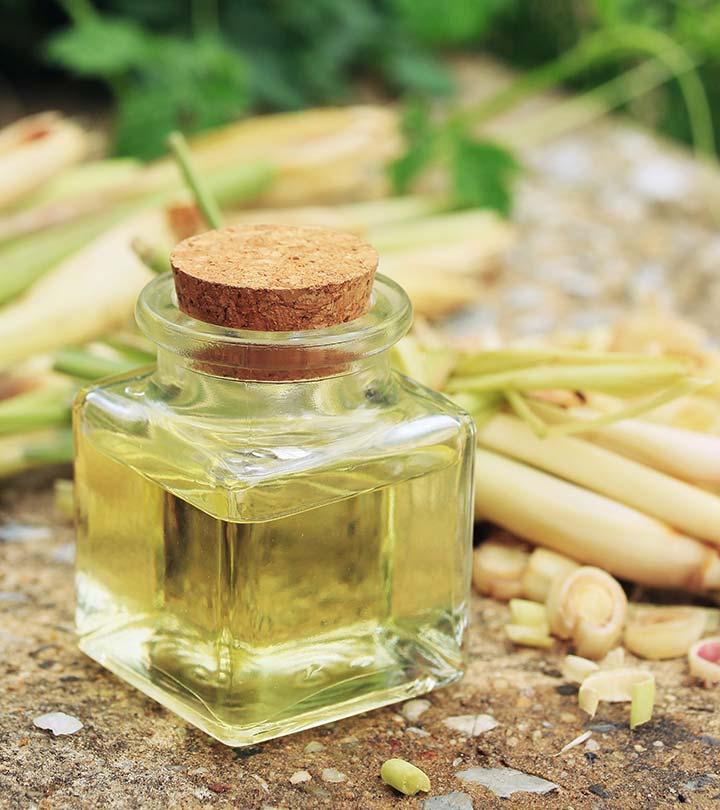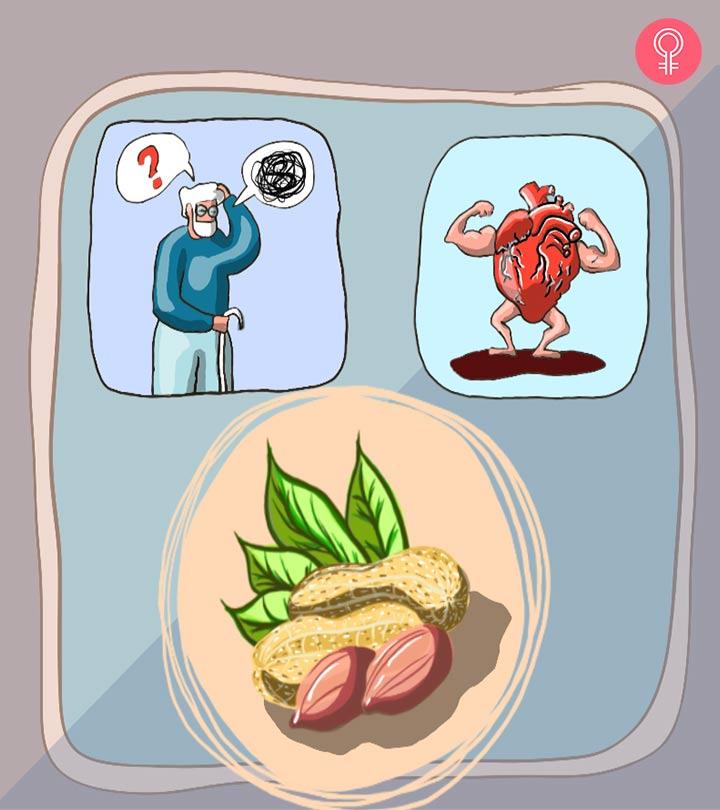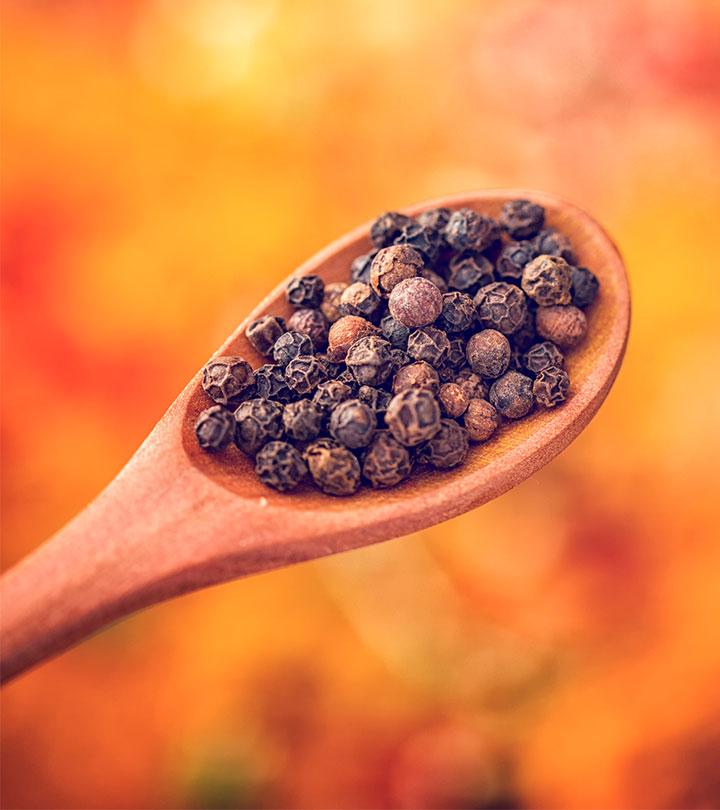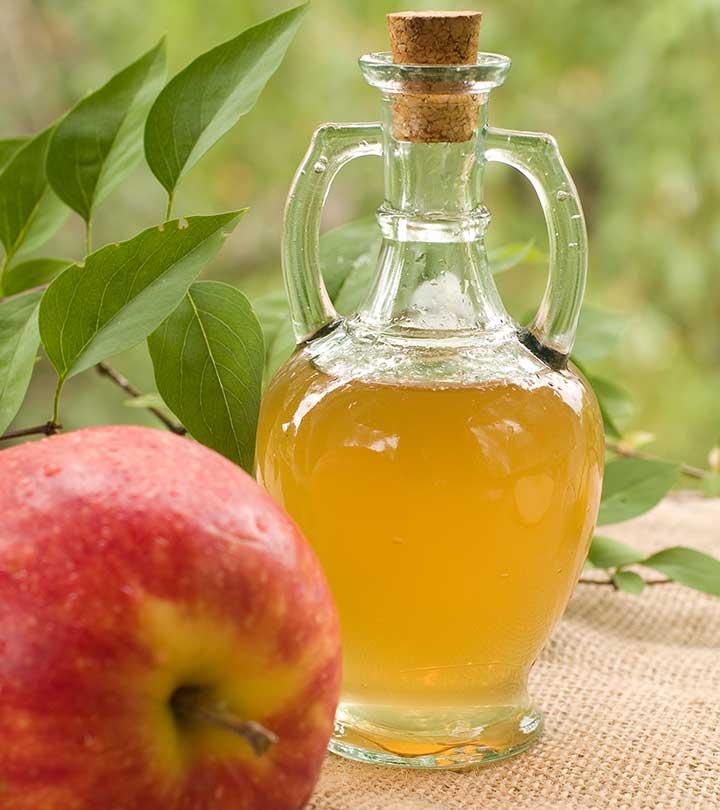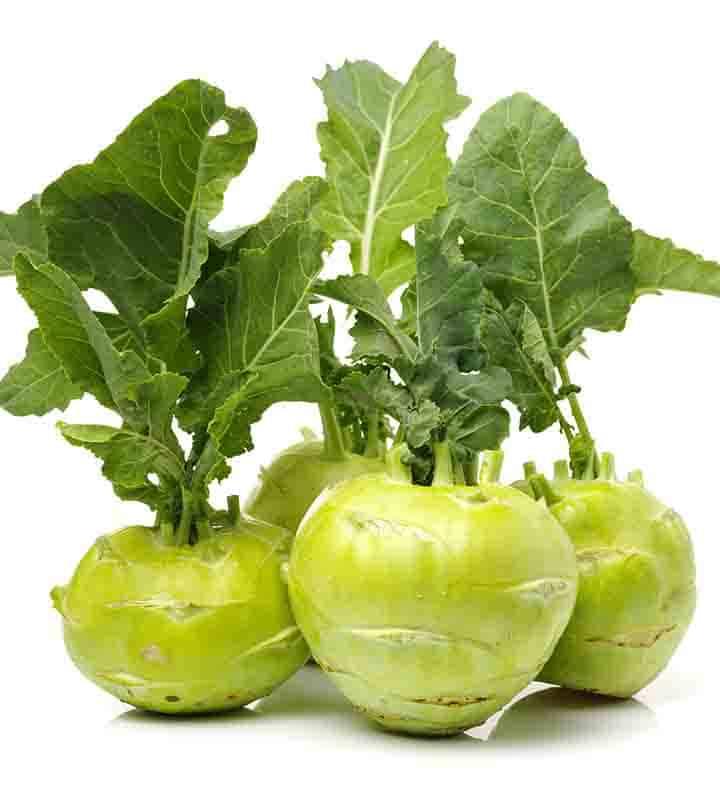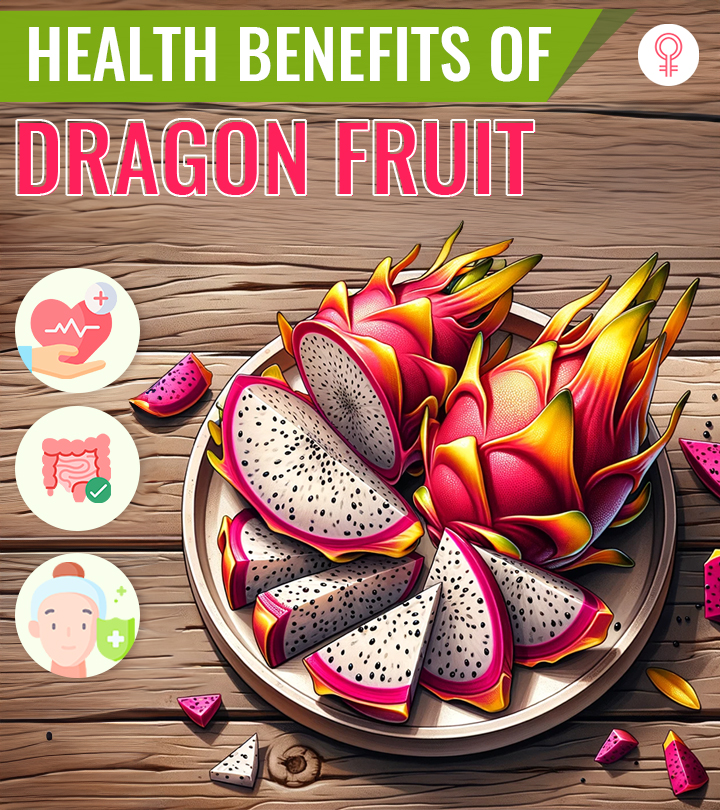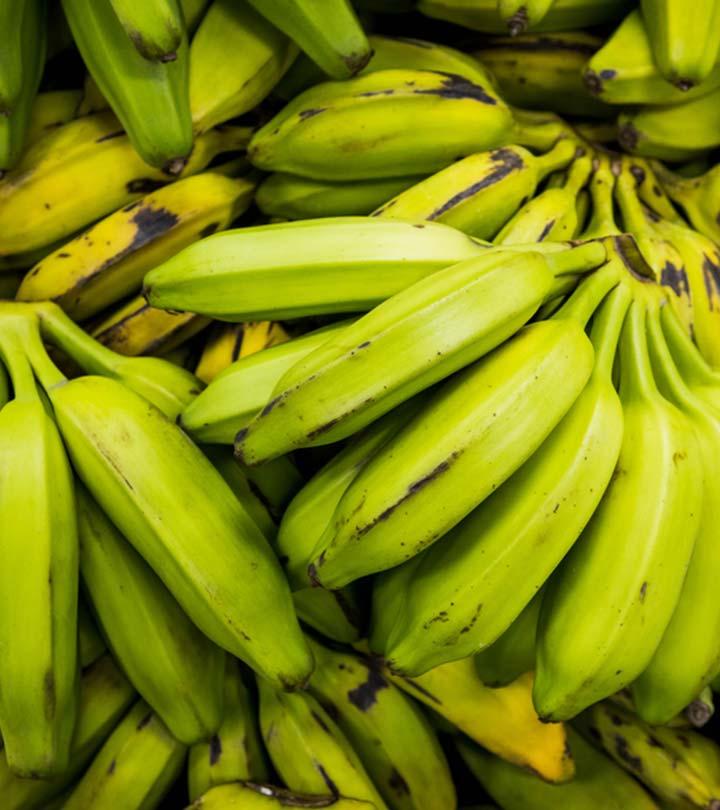5 Potential Benefits Of Wild Rice, Recipes, And Side Effects
It's time to grab a large bowl of wild rice for its benefits can bowl you over.
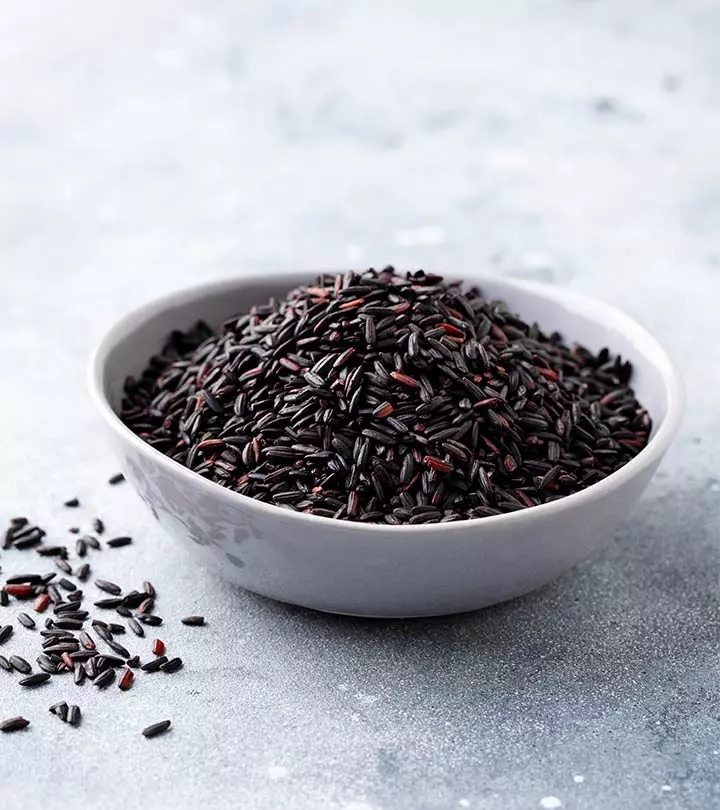
Image: Shutterstock
The benefits of wild rice can be attributed to its impressive nutrient profile. It contains essential fatty acids, high levels of fiber, and is rich in natural antioxidants. This stunning dark grain is native to North America. Wild rice is gaining popularity as a substitute for white rice. It is rich in protein and is gluten-free. Keep reading to know more about wild rice, its nutritional profile, and the benefits it offers.
 Know Your Ingredient: Wild Rice
Know Your Ingredient: Wild RiceWhat Is It?
A variety of rice shaped like regular white rice but is dark brown or black in color. It is generally not polished or refined.
What Are Its Benefits?
Helps regulate blood sugar and cardiovascular health and aids weight loss metabolism.
Who Can Consume It?
This is especially good for diabetics..
How Often?
It can be taken daily but in moderation.
Caution
Overconsumption can put you at risk of heavy metal toxicity and ergot fungus toxicity.
In This Article
What Is Wild Rice?
Don’t get confused by the name because wild rice is not rice. It is the seed or grain of an aquatic grass of the genus Zizania. It is also quite popular in East Asian countries, especially China (1).
If it is not rice, why is it called so? Well, the origin of this misnomer might lie with the early English explorers.
Wild rice was a staple diet of early North American indigenous cuisine (Native Americans), particularly the Ojibway, Menomini, and Cree tribes in the North Central region. It was originally called Manomio, which meant ’good berry.’ They introduced it to the European fur traders. The early English explorers named it ’wild rice’ or ’Indian rice,’ and the French called it ’folle avoine’ because of its similarity to oats.
 Trivia
TriviaFreshwater lakes and marshy rivers are ideal habitats for this grass. It grows up to a height between 1.5 to 3 meters. There are only four varieties of wild rice, and North America is home to three species (1):
- Zizania palustris (Northern wild rice) is an annual plant native to North America’s Great Lakes region.
- Zizania aquatica (Wild rice) is an annual plant that grows in Florida and the Atlantic and Gulf coasts of the United States.
- Zizania texana (Texas wild rice) is a perennial plant that grows along the San Marcos River in central Texas.
The fourth variety, Zizania latifolia, is native to East Asia (China, Japan, and Korea).
Wild rice is a natural source of minerals, vitamins, protein, starch, fiber, and phytochemicals and is one of the most nutritious grains available. It has a healthy fat profile and is gluten-free (2). Check out the nutrient profile of wild rice in the next section.
Nutritional Value Of Wild Rice
A hundred grams of cooked wild rice contains the following nutrients (3):
Calories | 166 kcal |
Proteins | 6.54 g |
Carbohydrates | 34.9 g |
Total lipids (Fat) | 0.55 g |
Dietary fiber | 2.95 g |
Sugars | 1.2 g |
Potassium | 166 mg |
Phosphorus | 134 mg |
Magnesium | 52.5 mg |
Niacin | 2.12 mg |
All these nutrients are necessary for healthy cellular growth. Compared to white rice, wild rice has (4),(5):
- 6X higher dietary fiber content
- 1.5X higher protein content
- Higher concentration of natural antioxidants
- Fewer calories and carbs
Its glycemic index (GI) is 53.72, which is close to oats and brown rice. What does that mean for your health?
The glycemic index (GI) of foods assigns a score to carbs based on how they influence blood sugar levels. Your blood glucose levels rise slowly when you eat low GI foods (score less than 55) than high GI foods (score over 70). Wild rice glycemic index is lower than steamed bread (88.1), wheat noodles (81.6), and corn noodles (68.0) (6).
 Trivia
TriviaConsuming whole grains has immense health benefits due to their rich nutritional composition. Read on to learn about the benefits of wild rice for health.
5 Potential Health Benefits Of Wild Rice
1. May Promote Heart Health
Wild rice is rich in fiber that helps reduce LDL cholesterol levels (bad cholesterol). High fiber intake, particularly cereal fiber, can reduce the risk of cardiovascular issues. A study states that consuming whole grains lowers the risk of coronary heart disease (CHD) (7), (8).
2. May Help Manage Diabetes
It is important to include viscous fibers in a diet plan to control type 2 diabetes. The fiber in wild rice lowers cholesterol levels and helps control blood glucose levels. Moreover, wild rice is a low GI food and good for diabetes management (6), (9).
3. May Promote Growth And Repair
Compared to white rice, wild rice contains more protein. Its high protein content may be beneficial for building muscle mass and promoting healthy development in our bodies (10).
4. Good Source Of Antioxidants
The phenolic compounds in wild rice are excellent sources of dietary antioxidants. A typical serving of wild rice has 9-13 times more antioxidant phenolic compounds than white rice (11).
5. May Aid Weight Loss
Wild rice has fewer calories, low fats and sugars, and high fiber. Fiber-rich meals promote quick satiety as they are processed slowly. These properties make wild rice an excellent choice for weight loss and weight management diet plans (9).
A close comparison is often drawn between wild and brown rice. While they share several similarities, they also are different in some important ways. Continue reading to understand further.
Wild Rice Vs. Brown Rice
Wild rice and brown rice are both nutrient-rich whole grains, but they have some key differences. Wild rice, a grass seed, boasts a distinctive nutty flavor and a darker color. Brown rice, on other hand, is a whole grain and has a milder taste.
Wild rice often surpasses brown rice in terms of nutrition (3), (12). It contains more carbohydrates and protein. It is also richer in fiber and essential minerals like potassium and zinc.
Brown rice, on the other hand, is more readily available and budget-friendly. While both types of rice offer health benefits, the better option for you would depend on your nutritional goals, budget, and taste preferences.
Wild rice has a unique grassy flavor and smokey undertone, and the dark grains also add a stunning visual element. If you are wondering how to eat wild rice, check out our next section.
How To Eat Wild Rice
You can eat it like any other type of rice! The only difference is the amount of water needed to cook it. Like other whole grains, wild rice has an outer shell or bran, which gives it a chewy texture. A robust, crunchy texture means it requires a long time to cook. As a result, you will need more water (usually at the ratio of 3:1) to achieve the right consistency.
In general, wild rice is sold as a part of rice blends as it is expensive. However, you can mix it with quinoa and other grains to create your blend.
A pilaf with its earthy, nutty flavor will satisfy all your tastebuds. Wild rice is commonly used in casseroles with cream, cheese, or chicken and meat stuffings. You can serve it with a creamy chicken or vegetable soup as well. Add it to salads along with dried nuts, cranberries, and green onions for a healthier option.
Kate, a home cooking blogger, shares her insights on wild rice based on her cooking experiments: “Wild rice is a little firmer and won’t go gloopy like your usual porridge oats or rice pudding, but I think the textures work well with creamy yogurt and mango, crunchy nuts, and the occasional pop from a pomegranate seed (i).”
Below are some wild rice cooking recipes you may try.
1. Creamy Chicken And Wild Rice Soup
What You Need
- 1 cup of wild rice
- 2 boneless chicken breasts, cooked and cubed
- 4 cups of chicken broth
- 2 cups of water
- 2 cups of heavy cream
- ¾ cup of all-purpose flour
- ½ cup of butter
- ½ teaspoon of salt
- ½ teaspoon of black pepper, ground
Method
- Boil broth, water, and chicken in a large saucepan over medium heat.
- Add the rice, cover, and turn off the heat.
- Combine salt, pepper, and flour in a separate bowl.
- Melt butter in a medium saucepan and gradually whisk in the flour mixture to make a roux.
- Incorporate the heavy cream slowly. Simmer for 5 minutes to thicken the sauce.
- Add the sauce to the cooked chicken and rice mix.
- Cook for 10 to 15 minutes over medium heat and serve.
2. Chicken And Wild Rice Casserole
What You Need
- 2 cups of wild rice
- 3 boneless chicken breasts, cooked and cubed
- 1 cup of dry white wine
- 1 cup of water
- 1 cup of sour cream
- 1 cup of mushrooms, sliced
- 1 cup of celery, chopped
- 1 can of cream of mushroom soup
- 1 onion, sliced
- 1½ teaspoons of salt
- 1 teaspoon of curry powder
Method
- Combine the chicken breasts, wine, salt, curry powder, onion, and celery in a large saucepan and bring to a boil.
- Cook on low heat for 1 hour.
- Turn off the heat, drain the broth (reserve some for serving), and let it cool.
- Cook the wild rice in broth instead of water.
- Preheat the oven to 350°F. Grease a baking dish.
- Combine the chicken, rice, mushrooms, sour cream, and soup.
- Pour into the baking dish and bake at 350°F.
3. Ham And Wild Rice Quiche
What You Need
- ¼ cup of wild rice
- 1 cup of ham, cooked and cubed
- ¾ cup of water
- 1 cup of sour cream
- 1 cup of mushrooms, sliced
- 1/3 cup of red bell pepper, chopped
- ¼ cup of green onion tops, sliced
- 1 pie crust, unbaked
- 3 eggs, beaten
- 2 cups of Swiss cheese, shredded
- 1 tablespoon of Dijon mustard
- ½ teaspoon of salt
- 1/8 teaspoon of black pepper
Method
- Cook the wild rice in a small saucepan for 45 minutes.
- Preheat the oven to 425°F. Bake the pie shell for 10 minutes until it is golden brown. Reduce the heat to 400°F.
- Combine the cooked rice, ham, red bell pepper, green onion tops, and mushrooms in a mixing dish.
- Combine the eggs, sour cream, mustard, salt, and pepper in a separate bowl.
- Sprinkle half of the shredded Swiss cheese on the pie shell base. Layer it with the rice mix followed by the egg mix. Top it with the remaining Swiss cheese.
- Bake for 30 minutes in the preheated oven.
- Serve after 10 minutes of rest.
Wild rice is generally safe for consumption. However, certain factors and irrigation practices may affect its quality and make it unsuitable for consumption.
Possible Side Effects Of Wild Rice
1. Heavy Metal Contamination
Traces of heavy metals like lead, arsenic, and cadmium have been identified in 26 different wild rice varieties in the United States. However, this is mainly due to increasing pollution, water, and wetland contamination (wild rice is grown in freshwater wetlands) (13), (14).
2. Ergot Fungus Toxicity
Wild rice is susceptible to ergot (Claviceps spp.) infection. The infected grains appear pinkish or with purple spots and fungus growths. Consuming infected grains may cause nausea, vomiting, diarrhea, headaches, and seizures.
However, grain quality standards and better agricultural practices reduce the risk of contamination in most countries, so ergot toxicity is rare (15).
Infographic: Wild Rice – Facts, Nutrition, And Ways To Include In Diet
Wild rice is not only known for its unique color but also its nutritional value. Its high protein content is making it a popular diet choice these days. This pseudo-grain also offers many health benefits if included as a part of your regular diet.
The following infographic provides some facts, the nutrition profile, and ways to include wild rice in your daily diet. Check it out! Illustration: StyleCraze Design Team
In Conclusion
The many benefits of wild rice make it a good substitute for regular white rice. It is visually appealing with its dark grains and nutty flavor. It packs a rich nutritional profile of dietary fiber, healthy carbs, vitamins, minerals, and beneficial bioactive compounds. This American rice variety has a low glycemic index and is beneficial for those watching their blood sugar levels and after-meal sugar spikes. Wild rice may help promote heart health, too, thanks to its rich dietary fiber content. It may help manage diabetes and weight loss as well. However, excess intake may increase the risk of heavy metal or ergot poisoning. If you experience any adverse effects, limit its consumption and seek medical advice.
Frequently Asked Questions
Is wild rice inflammatory?
No. Wild rice exhibits anti-inflammatory properties and is rich in a wide variety of vitamins, minerals, flavonoids, phenolic acids, and phytochemicals (15). The presence of these nutrients in wild rice offers many health-promoting effects.
Is wild rice difficult to digest?
Anecdotal evidence suggests that wild rice is easy to digest and can also enhance digestion. However, limited studies are available to prove these claims.
Is wild rice good for arthritis?
Yes. In general, foods rich in dietary fiber may help lower blood levels of C-reactive protein (one of the rheumatoid arthritis indicators of inflammation) (16). Wild rice is rich in fiber, which is considered good for arthritis.
Is wild rice a probiotic?
Wild rice may be used as a probiotic agent that helps improve gut health (17).
Is wild rice high in carbs?
No. Wild rice is lower in carbs when compared to white rice (3), (18).
Is wild rice good for your liver?
Yes. The intake of wild rice hep reduces liver steatosis (fatty liver disease) (19).
Key Takeaways
- Wild rice is a natural source of minerals, vitamins, protein, starch, fiber, and phytochemicals.
- It is a low GI food and good for diabetes management.
- Wild rice is susceptible to ergot infection. Consuming infected grains may cause nausea, vomiting, diarrhea, headaches, and seizures.

Image: Stable Diffusion/StyleCraze Design Team
Discover the incredible health benefits of wild rice. From aiding digestion to supporting heart health, watch this video for 11 reasons this nutrient-packed grain can transform your well-being.
Personal Experience: Source
StyleCraze's articles are interwoven with authentic personal narratives that provide depth and resonance to our content. Below are the sources of the personal accounts referenced in this article.
i. Wild Rice, Coconut & Mango Breakfast Bowlshttps://thelittleloaf.wordpress.com/2013/05/13/wild-rice-coconut-mango-breakfast-bowls/
References
Articles on StyleCraze are backed by verified information from peer-reviewed and academic research papers, reputed organizations, research institutions, and medical associations to ensure accuracy and relevance. Read our editorial policy to learn more.
- Morphological Characteristics Nutrients and Bioactive Compounds of Zizania latifolia and Health Benefits of Its Seeds
https://www.mdpi.com/1420-3049/23/7/1561 - Chapter 10 – Wild Rice: Nutritional and Health-Promoting Attributes
https://www.sciencedirect.com/science/article/pii/B9780081008669000108?via%3Dihub - FoodData Central
https://fdc.nal.usda.gov/fdc-app.html#/food-details/168897/nutrients - FoodData Central
https://fdc.nal.usda.gov/fdc-app.html#/food-details/168878/nutrients - Comparison of the contents of phenolic compounds including flavonoids and antioxidant activity of rice (Oryza sativa) and Chinese wild rice (Zizania latifolia)
https://www.sciencedirect.com/science/article/abs/pii/S0308814620324626?via%3Dihub - [Determination of the glycemic index of the wild rice and the effects of wild rice on insulin resistance in rats]
https://pubmed.ncbi.nlm.nih.gov/25997214/ - Cereal fiber and whole-grain intake are associated with reduced progression of coronary-artery atherosclerosis in postmenopausal women with coronary artery disease
https://www.sciencedirect.com/science/article/abs/pii/S0002870304005071?via%3Dihub - Meta-Analysis of the Association Between Whole Grain Intake and Coronary Heart Disease Risk
https://linkinghub.elsevier.com/retrieve/pii/S0002914914022784 - Position of the American Dietetic Association
https://www.jandonline.org/article/S0002-8223(02)90228-2/fulltext - Wild rice (Zizania sp.): A potential source of valuable ingredients for nutraceuticals and functional foods
https://www.researchgate.net/publication/299759968_Wild_Rice_Zizania_sp_A_Potential_Source_of_Valuable_Ingredients_for_Nutraceuticals_and_Functional_Foods_-_A_Review - Nutritional constituents and health benefits of wild rice (Zizania spp.)
https://academic.oup.com/nutritionreviews/article/72/4/227/1859059 - Rice, brown, long-grain, cooked
https://fdc.nal.usda.gov/fdc-app.html#/food-details/169704/nutrients - Trace metals in wild rice sold in the United States
https://www.sciencedirect.com/science/article/abs/pii/004896979504809X?via%3Dihub - Heavy metals in wild rice from northern Wisconsin
https://www.sciencedirect.com/science/article/abs/pii/S0048969799004647?via%3Dihub - Preliminary Phytochemical Investigation of Wild Rice Ergot
https://jpharmsci.org/article/S0022-3549(15)36316-4/pdf - Wild rice (Zizania spp.): A review of its nutritional constituents, phytochemicals, antioxidant activities, and health-promoting effects
https://pubmed.ncbi.nlm.nih.gov/32554311/ - Association between dietary fiber and markers of systemic inflammation in the Women’s Heath Initiative Observational Study
https://www.ncbi.nlm.nih.gov/pmc/articles/PMC2603616/ - Consumption of Wild Rice (Zizania latifolia) Prevents Metabolic Associated Fatty Liver Disease through the Modulation of the Gut Microbiota in Mice Model
https://www.ncbi.nlm.nih.gov/pmc/articles/PMC7432455/ - Rice white steamed Chinese restaurant
https://fdc.nal.usda.gov/fdc-app.html#/food-details/169712/nutrients - Consumption of Wild Rice ( Zizania latifolia) Prevents Metabolic Associated Fatty Liver Disease through the Modulation of the Gut Microbiota in Mice Model
https://pubmed.ncbi.nlm.nih.gov/32751062/
Read full bio of Dr Archana Batra
Read full bio of Ravi Teja Tadimalla
Read full bio of Sindhu Koganti







